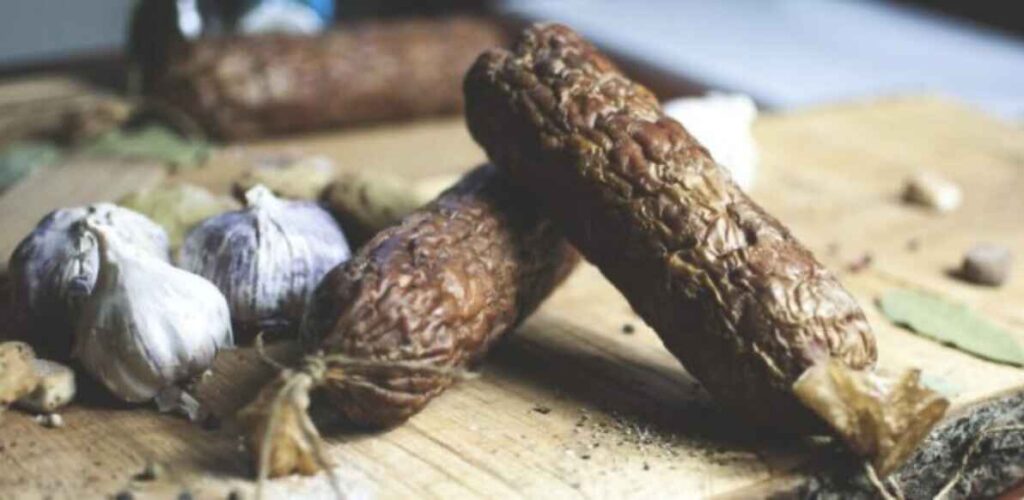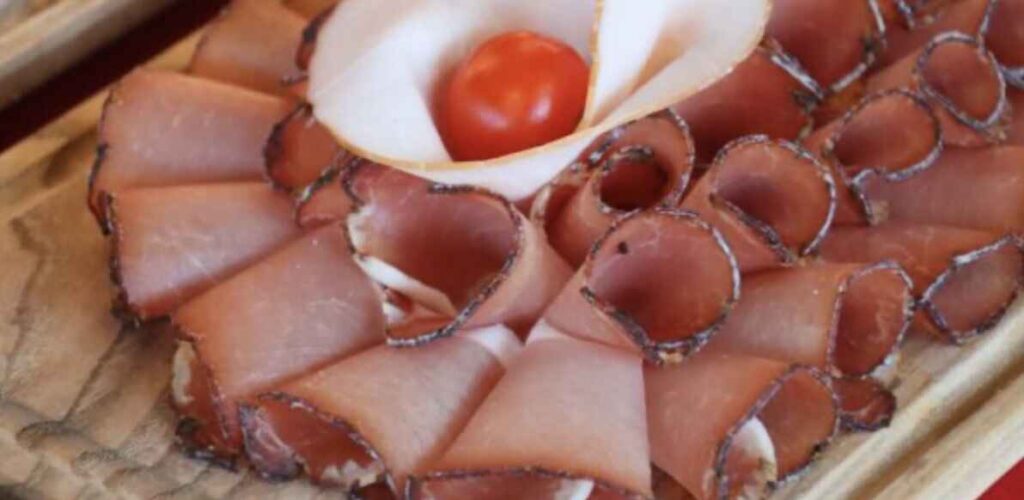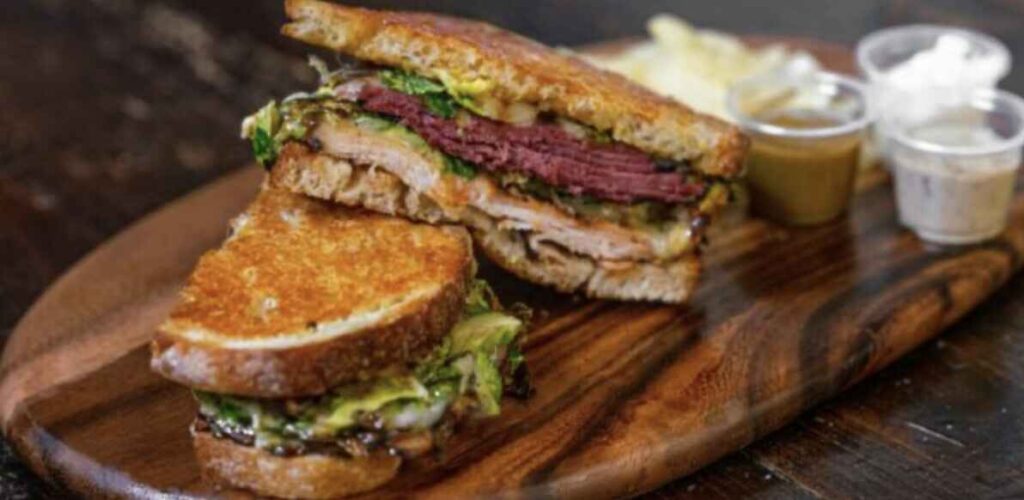What is Smoked Meat?
Smoked meats refers to meat that has been cooked or preserved by exposure to smoke, typically from burning wood, charcoal, or specific plant materials. This ancient cooking method not only extends the shelf life of meat but also infuses it with a distinctive, rich, and complex flavor that has made it a beloved culinary technique worldwide. Smoked meats can range from popular items like smoked brisket, ribs, or sausage, to regional delicacies like smoked salmon, bacon, or ham. The process of smoking may involve both hot and cold smoking, each yielding unique textures and flavors.
Table of contents
The History of Smoked Meat
The tradition of smoking meat dates back thousands of years and has its roots in early human civilization. Before the invention of refrigeration, smoking was one of the primary methods of preserving perishable foods. Archaeological evidence suggests that early humans discovered smoking as a preservation method by accident when storing meat near campfires.
Over time, the technique evolved from a survival strategy to an art form. Ancient cultures worldwide developed their unique smoking techniques and recipes. For instance:
- Indigenous people in North America used wood smoke to preserve fish and game.
- European cultures, especially in Germany and Eastern Europe, popularized smoked sausages and hams.
- Asian regions, like China, incorporated tea leaves into smoking for a distinct flavor profile.
The industrial era brought technological advancements, allowing smoked meats to become widely available. Despite this modernization, the artisanal practice of smoking meat remains a treasured tradition in many cultures.
Why Smoking Enhances Flavor
Smoking enhances flavor by introducing the smoky essence of burning wood into the meat, creating layers of taste that are otherwise impossible to achieve through regular cooking methods. Here’s how it works:
- Maillard Reaction: During smoking, the heat causes the sugars and proteins on the meat’s surface to caramelize, producing a rich, savory crust.
- Absorption of Smoke Compounds: Smoke contains compounds like phenols, aldehydes, and syringol, which penetrate the meat, delivering a deep, smoky flavor.
- Moisture Retention: Smoking, particularly low and slow cooking, locks in moisture, ensuring a juicy and tender texture.
- Flavor Customization: The type of wood used (e.g., hickory, mesquite, applewood) contributes specific flavors, ranging from sweet and fruity to earthy and bold.
Essential Tools for Smoking Meat
To achieve perfectly smoked meat, having the right tools is essential. From smokers to accessories, each item plays a critical role in ensuring flavor, texture, and overall success. Below, we’ll explore the key tools needed for smoking meat.
Smokers: Types and Uses
A smoker is the cornerstone of any smoking setup, and choosing the right type can significantly influence your results. Here are the most common types of smokers and their uses:
- Charcoal Smokers
- Description: Use charcoal as the primary fuel source, often combined with wood for added flavor.
- Uses: Ideal for traditionalists who value authentic smoky flavors and enjoy hands-on temperature control.
- Example: Weber Smokey Mountain.
- Electric Smokers
- Description: Plug into an electrical outlet and use heating elements to create smoke.
- Uses: Perfect for beginners or those seeking convenience and consistent results.
- Example: Masterbuilt Electric Smoker.
- Pellet Smokers
- Description: Use compressed wood pellets as both the fuel and smoke source, with precise temperature control via digital settings.
- Uses: Excellent for versatility and ease of use, capable of smoking, grilling, and baking.
- Example: Traeger Pellet Grill.
- Offset Smokers
- Description: Feature a firebox separate from the cooking chamber, allowing indirect heat and smoke to circulate.
- Uses: Favored by barbecue purists for slow-cooked meats and professional-grade flavor.
- Example: Oklahoma Joe’s Highland Smoker.
- Kamado Grills
- Description: Egg-shaped, ceramic grills that retain heat and moisture exceptionally well.
- Uses: Versatile for both grilling and smoking at various temperatures.
- Example: Big Green Egg.
Choosing the Right Wood for Smoking

The type of wood you use is crucial to the flavor profile of your smoked meat. Different woods impart distinct flavors, making it essential to choose one that complements your chosen meat:
- Hickory: Strong and smoky with a slightly sweet note; ideal for pork and ribs.
- Mesquite: Intense and earthy; best for red meats like beef brisket.
- Applewood: Mild and fruity; great for poultry and pork.
- Cherry: Sweet and versatile; pairs well with most meats.
- Oak: Balanced and robust; works well for brisket, ribs, and chicken.
- Pecan: Nutty and mild; excellent for pork and turkey.
Pro Tip: Experiment by blending different woods to create unique flavor combinations.
Other Necessary Tools and Accessories
Beyond smokers and wood, these tools are essential for a smooth smoking experience:
- Thermometers
- Types: Digital meat thermometers and smoker chamber thermometers.
- Purpose: Ensures precise cooking temperatures and internal meat doneness.
- Charcoal Chimney Starter
- Purpose: Quickly ignites charcoal without the need for lighter fluid.
- Heat-Resistant Gloves
- Purpose: Protects your hands while handling hot tools, grates, or meat.
- Basting Brush or Mop
- Purpose: Applies marinades, sauces, or moisture to meat during cooking.
- Drip Pans
- Purpose: Catches grease and drippings, preventing flare-ups and mess.
- Tongs and Spatulas
- Purpose: Handles meat safely and easily.
- Smoke Box or Wood Chip Tray (for gas grills)
- Purpose: Holds wood chips to generate smoke in a non-traditional smoker.
- Cleaning Tools
- Items: Grill brushes and scrapers to keep grates clean after each use.
Best Meats for Smoking

Beef: Brisket, Ribs, and More
Beef is a staple in the world of smoked meat due to its bold flavor and ability to withstand long cooking times.
- Brisket: Known as the king of smoked meats, brisket benefits from low-and-slow smoking to become tender and juicy.
- Ribs: Beef ribs develop a rich crust and smoky flavor, making them a barbecue favorite.
- Other Cuts: Cuts like tri-tip, chuck roast, and even ground beef for smoked burgers are excellent options.
Pork: Shoulder, Bacon, and Tenderloin
Pork’s natural fat content makes it ideal for smoking.
- Shoulder (or Pork Butt): Perfect for pulled pork sandwiches, this cut absorbs smoke well and stays juicy.
- Bacon: Smoking adds unparalleled depth to this breakfast staple.
- Tenderloin: A leaner option that pairs well with sweet and savory rubs.
Poultry: Chicken, Turkey, and Duck
Poultry smokes quickly and absorbs flavor effectively.
- Chicken: Whole chickens, wings, and thighs are popular choices for smoking.
- Turkey: Great for holidays, smoked turkey offers a flavorful alternative to roasting.
- Duck: Its natural richness makes it a gourmet option for smoking.
Seafood: Salmon, Trout, and Shrimp
Seafood smokes relatively quickly and takes on a delicate, smoky flavor.
- Salmon: A classic choice, often paired with sweet glazes or rubs.
- Trout: Ideal for cold smoking, resulting in a silky texture.
- Shrimp: Quick to smoke and versatile for appetizers or main dishes.
Extra Options: Lamb, Venison, and Game
For adventurous eaters, extra meats offer unique smoking opportunities.
- Lamb: Cuts like leg or rack of lamb pair well with fruity woods.
- Venison: Its lean texture benefits from brining before smoking.
- Game Meats: Pheasant, quail, or wild boar add variety to any smoked meat menu.
Preparation Techniques
How to Select Quality Meat
- Look for marbling (fat distribution) in beef and pork for flavor and tenderness.
- Ensure poultry is fresh and free of additives like sodium solution.
- Choose wild-caught seafood for superior flavor and texture.
Proper Trimming and Cleaning
- Trim excess fat to avoid flare-ups but leave enough for moisture and flavor.
- Remove membranes from ribs for better smoke penetration.
- Rinse seafood and pat dry to remove any surface moisture.
Brining, Curing, and Marinades
- Brining: Soak poultry or lean meats in a saltwater solution for added moisture.
- Curing: Apply salt and other seasonings to enhance preservation and flavor, particularly for bacon or salmon.
- Marinades: Use acidic and flavorful liquids to tenderize and infuse meats with depth.
Seasoning and Rubs for Maximum Flavor
- Apply dry rubs generously for a flavorful crust.
- Use a combination of salt, sugar, and spices tailored to your meat.
- Experiment with wet rubs for added moisture and richness.
Smoking Methods Explained
Low and Slow Smoking
- Cook meat at temperatures between 225°F and 250°F for hours to achieve tender, flavorful results.
- Ideal for cuts like brisket, pork shoulder, and ribs.
Hot Smoking vs. Cold Smoking
- Hot Smoking: Cooks meat at 200°F–300°F, imparting smoke and fully cooking the meat.
- Cold Smoking: Smokes at temperatures under 90°F, typically used for preservation or delicate flavors in seafood and cheese.
The Reverse Sear Method
- Smoke meat slowly until it’s nearly cooked, then sear at high heat to create a flavorful crust.
- Commonly used for steaks and tender cuts of beef.
Step-by-Step Smoked Meat Recipes
Classic Smoked Beef Brisket
- Rub with a mix of salt, pepper, garlic powder, and paprika.
- Smoke at 225°F for 10-12 hours, wrapping in foil halfway through.
- Rest before slicing.
Smoky Pulled Pork Sandwiches
- Use pork shoulder rubbed with brown sugar, chili powder, and spices.
- Smoke until tender, shred, and serve with barbecue sauce on buns.
Hickory-Smoked Chicken Wings
- Season with a spicy dry rub.
- Smoke for 1.5–2 hours, then finish with a glaze of honey and hot sauce.
Sweet and Spicy Smoked Salmon
- Marinate in a mixture of brown sugar, soy sauce, and chili flakes.
- Smoke at a low temperature for 2-3 hours.
Homemade Smoked Sausage
- Mix ground meat with spices and stuff into casings.
- Smoke until fully cooked and enjoy as a snack or in dishes.
Tips and Tricks for Perfect Smoked Meat
Managing Temperature for Consistency
- Use a reliable smoker thermometer to monitor internal temperatures.
- Maintain steady heat by adjusting vents or adding fuel as needed.
Avoiding Common Smoking Mistakes
- Don’t oversmoke—too much smoke can create a bitter taste.
- Avoid peeking too often, which disrupts temperature stability.
Timing and Resting for Juiciness
- Allow meat to rest after smoking to redistribute juices.
- Plan cooking times carefully, as some cuts require hours of patience.
Pairing Smoked Meats with Sides
Traditional Pairings: Coleslaw, Baked Beans, and Cornbread

- Coleslaw provides a refreshing crunch to balance smoky flavors.
- Baked beans add sweetness and heartiness to the meal.
- Cornbread pairs perfectly with barbecue sauces and smoked meats.
Creative Pairings: Grilled Vegetables and Unique Salads
- Try grilled zucchini, asparagus, or bell peppers for a smoky vegetable pairing.
- Include salads with citrus, nuts, or creamy dressings for a modern twist.
Serving and Presentation Ideas
How to Plate Smoked Meats Like a Pro
- Slice meat evenly and arrange it neatly on a platter.
- Use garnishes like fresh herbs, lemon wedges, or pickles for a pop of color.
Garnishes and Sauces for Added Flavor
- Offer a variety of sauces, such as tangy barbecue, mustard-based, or sweet chili.
- Sprinkle finishing salts or spices for an added layer of flavor.
Health Benefits of Smoked Meats
Nutritional Information
- Smoked meats are protein-rich and can be lean if prepared without excess fat.
- Low-sodium rubs and natural ingredients improve their nutritional profile.
Healthier Smoking Alternatives
- Use lean cuts and avoid sugary marinades.
- Experiment with fruitwood for a lighter, cleaner smoke flavor.
Storing and Reheating Smoked Meats
The Best Ways to Store Leftovers
- Wrap meat tightly in foil or vacuum-seal to prevent freezer burn.
- Store in the refrigerator for up to 3 days or freeze for longer shelf life.
Reheating Without Losing Flavor
- Reheat in a low oven or smoker to preserve texture and flavor.
- Add a splash of broth or sauce to retain moisture.
Frequently Asked Questions
- What’s the best smoker for beginners?
Electric or pellet smokers are ideal due to their ease of use. - How long does smoking take?
Depending on the cut, smoking can take anywhere from 1–14 hours. - Can I smoke meat indoors?
Smoking should always be done outdoors in a well-ventilated area. - What’s the best wood for smoking?
It depends on the meat, mesquite for beef, and fruitwoods for poultry and seafood. - Do I need to soak wood chips?
It’s optional, but soaking can help control the rate of smoke production. - Why is my smoked meat dry?
Overcooking, inadequate fat, or failing to rest the meat can lead to dryness.
Final Thoughts
Smoked meat is a timeless culinary delight that combines history, technique, and bold flavors. Whether you’re a novice or an experienced pitmaster, exploring smoked meat recipes will elevate your cooking skills and bring joy to your dining table. So fire up that smoker and start creating flavorful masterpieces today!

